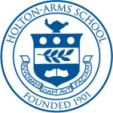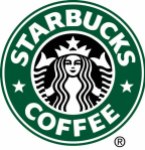 Lately I’ve worked with several law firms who are upping the ante in terms of their brand presence. But with the recent demise of Howrey (who changed to the fashionable one-name brand as part of its re-branding campaign a few years back, not so many months before going belly-up), many may wonder if re-branding is not only a waste of money but also a portent of impending corporate doom.
Lately I’ve worked with several law firms who are upping the ante in terms of their brand presence. But with the recent demise of Howrey (who changed to the fashionable one-name brand as part of its re-branding campaign a few years back, not so many months before going belly-up), many may wonder if re-branding is not only a waste of money but also a portent of impending corporate doom.
I’d like to make the case that it’s not re-branding that’s the problem, but what goes on behind it.
The motivation for re-branding is the key to its success. If the goal is to put new packaging on an old product (The Gap), then it probably won’t work. If the goal is to re-present an old brand to new audiences (“it’s not your father’s Oldsmobile”) it can work, but needs to be thoughtfully designed. And if the goal is rolling out a new brand, then the success lies in whether that product or service really has an audience in the first place.
In the case of Howrey, the re-brand was preceded by a decision to streamline the firm’s business lines into several key areas: anti-trust, litigation, and intellectual property. The problem with that strategy–it became clear in hindsight–was that Howrey could no longer be an all-purpose corporate law firm. When times were flush, that worked. But as the firm expanded and swallowed up competitors, it became more and more likely to have conflicts of interest and have to turn down work. Enter the recession, and the whole thing was over. So it wasn’t the re-brand that killed Howrey, it was the strategy behind it.
So what kinds of strategies can support a re-brand? I believe in an integrated approach:
1. Use social media. Still frightening to many corporate and nonprofit leaders, social media allows organizations to engage clients and members with a personalized voice. It also gives them a way to receive feedback from clients, and tools for mining existing contacts for prospects. But social media requires having internal guidelines and teaching staff how to use it most effectively. It remains a task that is often foisted on the newest/youngest members of a team, rather than its most seasoned players, who are often your best brand ambassadors.
2. Advertising. Placing the right ad in the right venue can support other marketing initiatives and enhance name and brand recognition. One of my colleagues in the nonprofit space says her organization gets some of its top hits from a tiny, 1 inch sidebar ad in The New Yorker magazine. Knowing more about your target audience (which you can do through social media!) really helps in making an advertising strategy effective.
3. Logos, names and taglines. Re-brands tend to come with new identity packages and tag lines. Some are great (“Take your ideas to the world.”–Baker & Botts). Some are so generic you wouldn’t know what a company does (“A tradition of innovation”–you know who you are, or do you?). The key with logos, names and tag lines is not that you have them, but what you do with them. If your strategy is to put them on your new web page and sit back, waiting for clients to arrive, then they probably won’t make a difference. If you can position them in ways to grab attention and re-enforce market position, then they can help put you ahead of the competition. Frankly, even The Gap gained loads of attention and a good read on customer loyalty to its original brand identity when it got negative reviews of its new logo.
4. Web 2.0. Many organizations are still somewhere around 1.6, while some in the commercial world are fast approaching 3.0. Web 2.0 simply means the death of the web page as road-side billboard, with more interactivity, more opportunities to refresh content, a recognition of the role of search engines, and the integration of tools like comments and video. It is now what consumers expect of their vendors and non-profits.
5. PR Matters. This is where the softer touch of public relations comes into play. Buying sponsorships at your local AA ball park or supporting a local food drive could be just the right places to roll out your new brand, and provide better visibility and more targeted market segmenting than pure advertising. Closing the gap between “hard” and “soft” marketing can also be accomplished with educational tools like a podcast series, that helps prospective clients see your expertise and talent in action, then link back to your products and services. PR is also essential when something goes wrong with your brand–such as the recent debacle over the high-priced pre-term birth drug rolled out by KV Pharma. Trying to drag out the PR hoses once the barn is already on fire is harder than having a strategy in place to begin with.
6. Use Real ROI. Counting the number of hits is out. Understanding who the hits come from is in. Whether you use analytics tools from Google, Lithium or Radian, you still have to decide what it is you are measuring and why. And since most service industry and non-profit marketing is cumulative, putting a value on the quality as well as quantity of your social media interactions is key. (more on this in a future ROI post)
Takeaways: Re-branding isn’t perilous in of itself. It just must be accompanied by a strong strategy and an organization whose actions and words are consistent with its mission.
 We’ve had a seismic shock here in Washington, DC. What can be learned from Eric Cantor’s historic loss of his seat and his position as Majority Leader?
We’ve had a seismic shock here in Washington, DC. What can be learned from Eric Cantor’s historic loss of his seat and his position as Majority Leader?
















